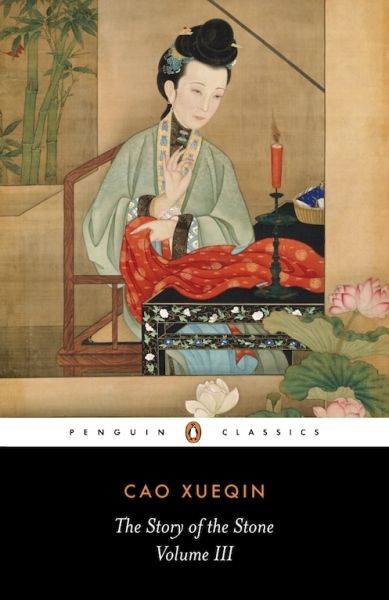Cloudy Gray Times
The Warning Voice (The Story of the Stone, volume 3)
By Cao Xueqin (Translated by David Hawkes)

15 Dec, 2021
0 comments
The Warning Voice is the third of the five volumes of Cao Xueqin’s The Story of the Stone. The 1981 translation of The Warning Voice is the third and final volume translated by David Hawkes. The final two volumes were translated by Hawkes’ student, John Minford. Although the first three volumes were translated by Hawkes and the final two by Minford, they comprise one long translation project.
This volume begins with a discussion by Hawkes of the challenges inherent in conveying this volume effectively. Prominent among the issues face: due to the history of the text’s creation and publication two centuries ago, the tale is somewhat contradictory, almost as though in the course of producing five different drafts, Cao Xueqin and his editors lost track of characters’ names and fates.
The crisis facing the Jia family is straightforward. Firstly, this generation has a profound lack of men of high calibre. Secondly, the family income has declined. Thirdly, their obligations have not. Clearly, cost-cutting measures are necessary. Unfortunately, that would require various family members to moderate their behavior and to embrace a practice of prudent budgeting that is quite alien to their habits. Absent that, the only question is how long it will take for the inevitable bankruptcy to occur.
In fact, reluctance to lower spending is not simply a case of cosseted aristocrats failing to come to terms with diminished income. Legions of servants and hangers-on are dependent on Jia family largess. Fat-trimming has potentially catastrophic consequences for those cast aside by the Jia. Indeed, at least one spurned servant dies from what appears to be despair at their reduced circumstances.
Protagonist Bao-yu blunders his way through the book, his desire to treat those around him well undermined by his capacity for unfortunate comments. Perhaps it is for the best that his page count is greatly reduced. Other relatives do not have the same excuse for their behavior; the men of the clan are characterized by incessant horniness and lack of empathy, which lead to vendetta and heartbroken suicide.
By the end of the book, the end has not come for the Jia but it is very much in sight.…
~oOo~
There is a lot to enjoy in this volume. For example, Grandmother Jia’s extended rant about popular fiction’s highly implausible cliches [1] is quite funny. I’d quote sections of her complaints but it was too hard to know what to leave out. The specifics are not applicable to modern, English-language books but the general complaint — that authors reuse absurd plots and details not because they are reasonable, but because readers like them for some reason — stands.
Unsurprisingly in a book about the decline and fall of a once-great family, tragedy also abounds. The list of characters, while still quite lengthy, is shorter at the end of the volume, what with the murders, suicides, inadvertent poisonings, and sudden fatal illnesses.
While reading this series, I have enjoyed learning just how aristocratic households of this time and place functioned. The network of service and obligation is fascinating to watch in action. It’s a pity that it does not work better than it does.
The problem with reviewing this volume is that this volume resembles the results of a terrible teleportation accident, as if a couple of quite disparate novels were to intersect with each other. The result doesn’t add up to a coherent whole (leaving aside the whole ‘this is part of a much larger novel’ issue). There appear to have been at least five drafts of the book and the final product is somewhat self-contradictory. Hawkes comments at one point on characters who die in one chapter, only to reappear in another. I would recommend the volume … but don’t go into it expecting consistency.
The Warning Voice is available here (Amazon US), here (Amazon Canada), here (Amazon UK), here (Book Depository), and here (Chapters-Indigo).
I did not find this edition at Barnes & Noble.
1: It may be part of the author’s poking fun at literary conventions that the book violates the One Steve Rule. Different characters share the same name, including Bao-yu (much to his distress). In real life, of course, that happens all the time. In stories, it’s considered polite to give the reader a hand in keeping characters straight by giving them easily distinguished names.
